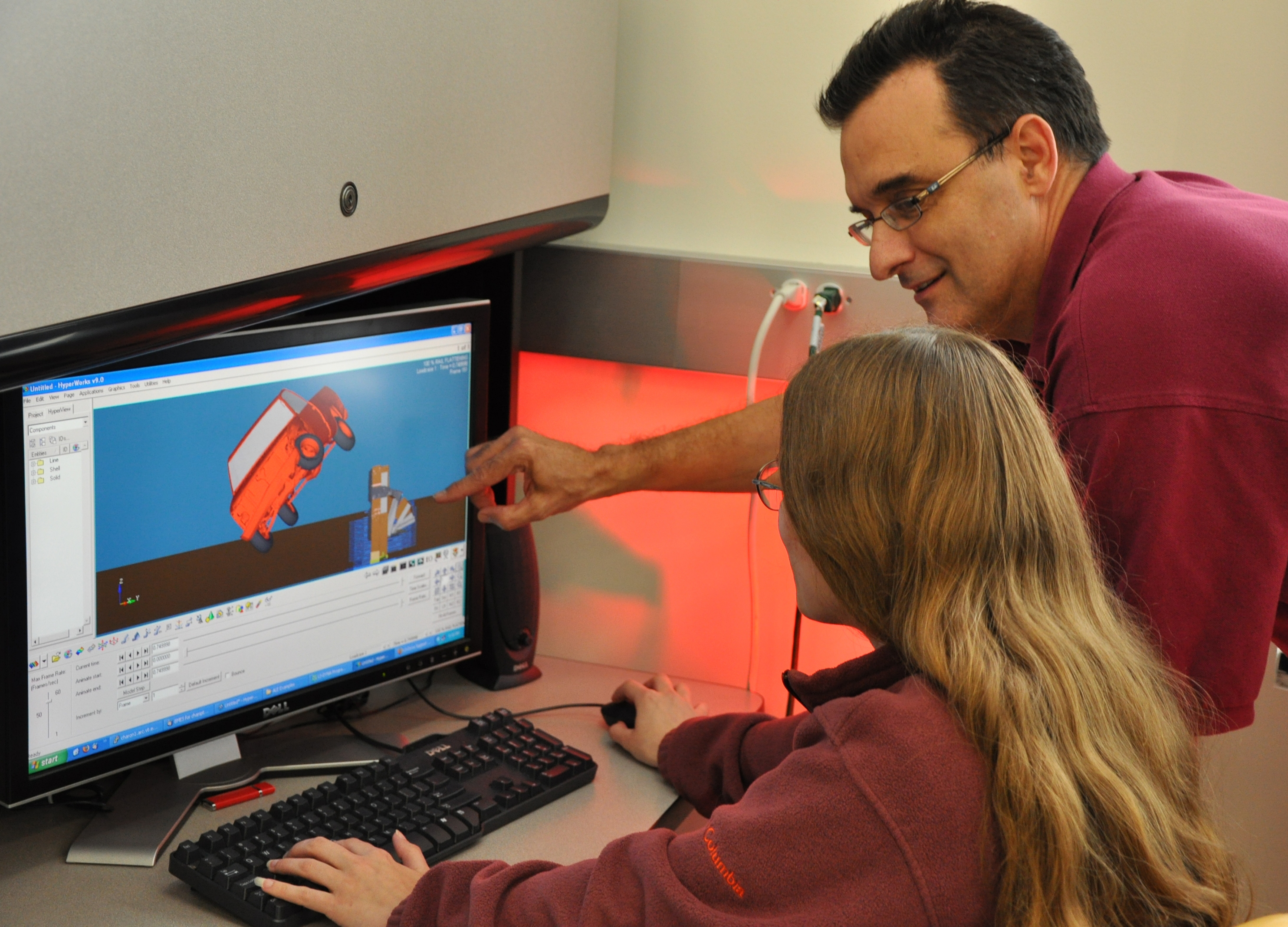Virginia Tech Transportation Institute, Center for Injury Biomechanics receive $1.5 million for research

The National Academies has awarded the Virginia Tech Transportation Institute’s Center for Injury Biomechanics two research grants totaling $1.5 million. These grants are to fund in-depth investigations of serious and fatal road departure crashes to identify the crash and injury causation mechanisms associated with these traumatic events.
Clay Gabler, associate professor of biomedical engineering in the College of Engineering, will lead both research programs. The first grant is for a four-year large-scale study of crashes and injuries from accidents involving passenger vehicles. The second grant is for a two-year study that will focus on the specific characteristics of serious and fatal injuries from motorcycle crashes into traffic barriers.
"[Virginia Tech Transportation Institute] is the leader in conducting large-scale crash causation studies involving passenger and commercial motor vehicles and we have just launched a new motorcycle crash causation study. Continuing research such as this, including injury biomechanics, adds to our overall knowledge base to amass real data that will help save lives," said Tom Dingus, director of the transportation institute.
Each year, more than 10,000 motorists are fatally injured in road departure crashes in the U.S. Vehicle occupants who depart the roadway are at risk of serious or fatal injury from collisions with trees, poles, side slopes, and other hazards. To reduce this toll, thousands of miles of guardrail, breakaway luminaries and signs, and other highly engineered safety devices have been installed. Unfortunately, guardrails may are not always a forgiving object to strike. In 2007, there were 1,154 fatal crashes and 34,000 injurious crashes into guardrails in the U.S.
The reasons that road departure crashes so often lead to fatality or injury are complex and not completely understood. For the passenger vehicle study, the Center for Injury Biomechanics will conduct in-depth investigations of 1,000 road departure crashes at 24 sites across the U.S. Gabler’s team will partner with Calspan Corporation, KLD Associates, and the Swedish National Road and Transport Research Institute. "The study promises to provide fundamental new insights into the crash conditions associated with road departures, such as impact speed, impact angles, vehicle road departure orientations, encroachment frequencies, and roadside topography, to reduce the severity and frequency of roadside crashes," said Gabler.
The study will couple these crash causation factors with complete injury information for each of the crash victims to identify the influence of infrastructure design on injury outcomes.
"Even in an era with airbags in almost every car and highways lined with the most advanced roadside barriers, road departures too often lead to death or serious injury," said Gabler. "And as often as the tragic events happen, their crash and injury mechanisms are still somewhat of a mystery. In the U.S., we are blessed with fantastic data on vehicle-to-vehicle crashes. Unfortunately, the U.S. has only sparse data on the crash conditions associated with road departures and their serious injury outcomes. This will be the first large scale study in the world in over a decade to investigate road departure crashes in great depth."
The second study focuses on motorcycle-traffic barrier crashes. Unlike passenger vehicle occupants, motorcycle riders have neither the protective structural cage nor the advanced restraints that are commonplace in cars and light trucks. Motorcyclists now account for nearly half of all deaths in guardrail collisions, surpassing every vehicle type including cars and SUVs. Gabler will partner with Joel Stitzel Jr., Wake Forest University director of the Center for Injury Biomechanics, to conduct motorcycle crash investigations in North Carolina. Other partners include Bucknell University and the Medical College of Wisconsin.
"Motorcyclists are at particular risk in road departure crashes. One in eight motorcyclists who collide with a guardrail are fatally injured. By contrast, only 1 in 20 motorcyclists who collide with passenger vehicles are killed," said Gabler. "This study takes the first step toward reducing the serious injury and fatality risk experienced by these riders."
The partnership between the Virginia Tech Transportation Institute and the Center for Injury Biomechanics, established in spring 2009, combines the institute’s auto safety expertise with the center's injury biomechanics expertise. The Center for Injury Biomechanics was established at Virginia Tech in 2000.
Related Links
- Virginia Tech Transportation Institute Center for Injury Biomechanics Crash Sled Lab now open
- New data from Virginia Tech Transportation Institute provides insight into cell phone use and driving distraction
- New partnership between Virginia Tech Transportation Institute and Center for Injury Biomechanics receives first research grant




